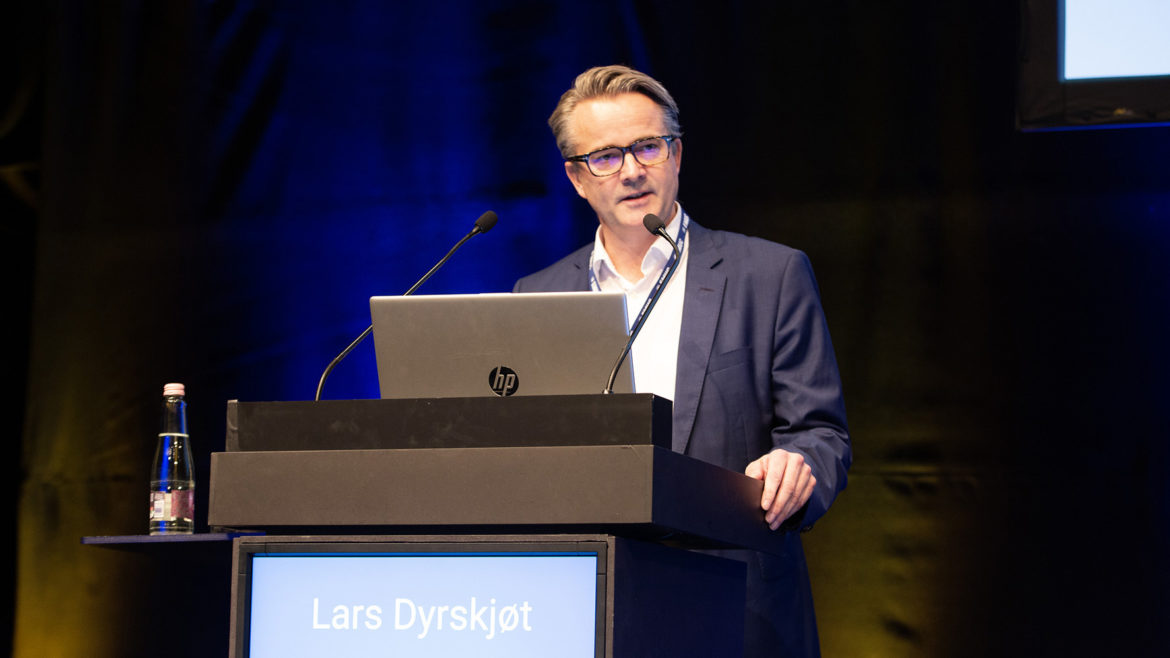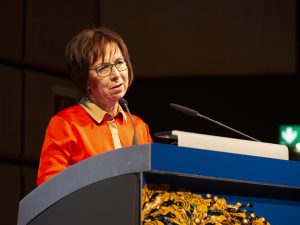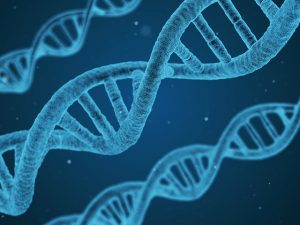After a day full of supplementary meetings like ESUI22 and the YAU’s Autumn Meeting, day two of EMUC22 saw the start of the main scientific programme with plenary sessions covering prostate (2), bladder and urothelial cancer. The European School of Urology and the EAU’s imaging section offered a hands-on training course in MRI reading for urologists, a vital skill to improve multidisciplinary cooperation.
In the plenary session on bladder cancer, a succession of esteemed experts highlighted some new developments in their field.
Urinary markers
Prof. Lars Dyrskjøt (Aarhus, DK) started the session with an update on the research he and his team are undertaking in urinary markers in non-muscle invasive bladder cancer. He explored the diagnostic, prognostic and predictive values of urine testing.
“Multiple urine tests are available, with relatively high sensitivity and specificity. We need randomised intervention trials to demonstrate that cystoscopy could be skipped in some cases. Quality-of-life and health economy analysis should be included in the design of these trials,” explained Prof. Dyrksjøt.
“Screening may be difficult – but promising results have been shown in patients with haematuria. Analysis of cell-free DNA in urine (supernatant) may identify high-risk patients.”
Significantly, urine markers may also help an earlier selection of patients for more aggressive treatment. Finally, urine analysis during BCG of T-cell exhaustion biomarkers may inform on treatment response.
Prof. Susanne Osanto (Leiden, NL), who chaired the session hailed Prof. Dyrksjøt’s “tremendous work in genomics in BCa.” Earlier on Friday, Prof. Arnulf Stenzl (Tübingen, DE) referred to the Aarhus TOMBOLA trial, saying that there were “high hopes that that will show possibilities of liquid biopsy for indication and monitoring.”
New research
Prof. Morgan Rouprêt (Paris, FR) followed the talk on urinary markers with a fresh look at the role of transurethral tumour removal for bladder preservation strategies, stressing the importance of functional outcomes as well.
Dr. Markus Eckstein (Erlangen, DE) presented a pathologist’s perspective on molecular subtyping and gene profiling. In his pre-recorded presentation he outlined that subtypes of NMIBC and MIBC are based on profound biological features and that consensus subtypes should be used, if possible.
It would have to be discussed if subtypes can be assessed via immunohistochemistry. The prognostic impact also differs between NMIBC and MIBC, while the predictive impact is still promising. As in so many cases with new research, Dr. Eckstein concluded that prospective validation in clinical trials is still missing.
Prof. Thomas Powles (London, GB) was on hand to update the audience on optimal patient selection for adjuvant treatments. While covering a huge amount of considerations, some of the most important conclusions were that tissue-based biomarker PD-L1 was perhaps not the best choice despite being the only approved biomarker in Europe. A new tool for patient selection is ctDNA as demonstrated in the recent IMvigor010 trial. Notably, EMUC22 has the first research on neoadjuvant immune combination therapy: “triplet therapy” in the VOLGA trial (LP166).
- EMUC22 delegates can watch back Plenary Session 3 in its entirety once it becomes available in the EMUC22 Resource Centre.





